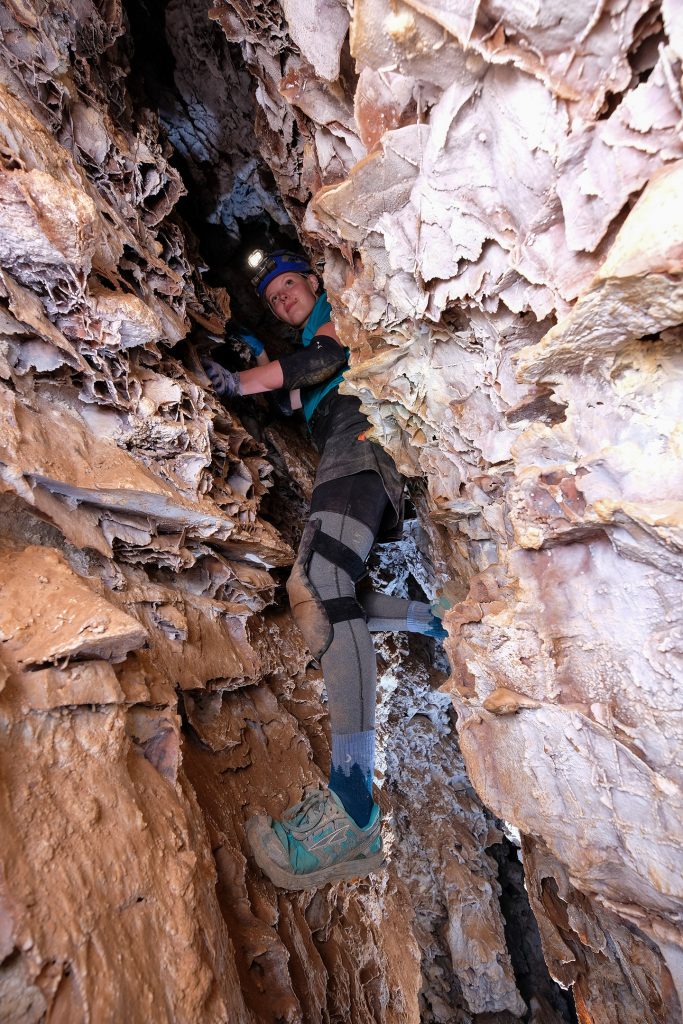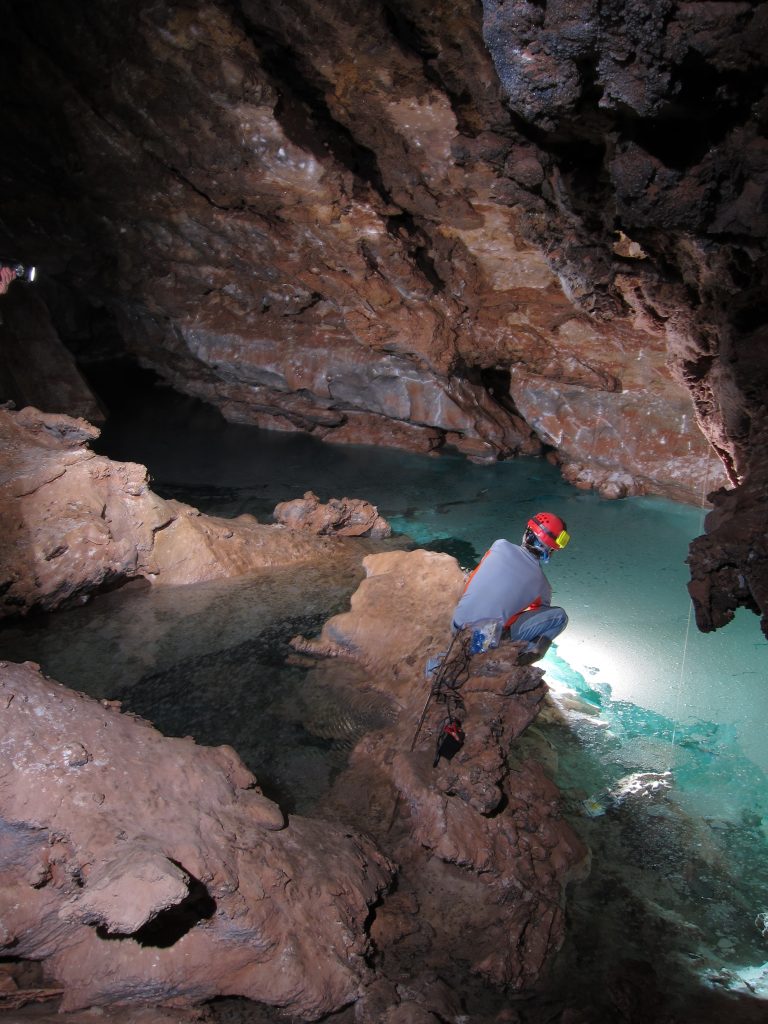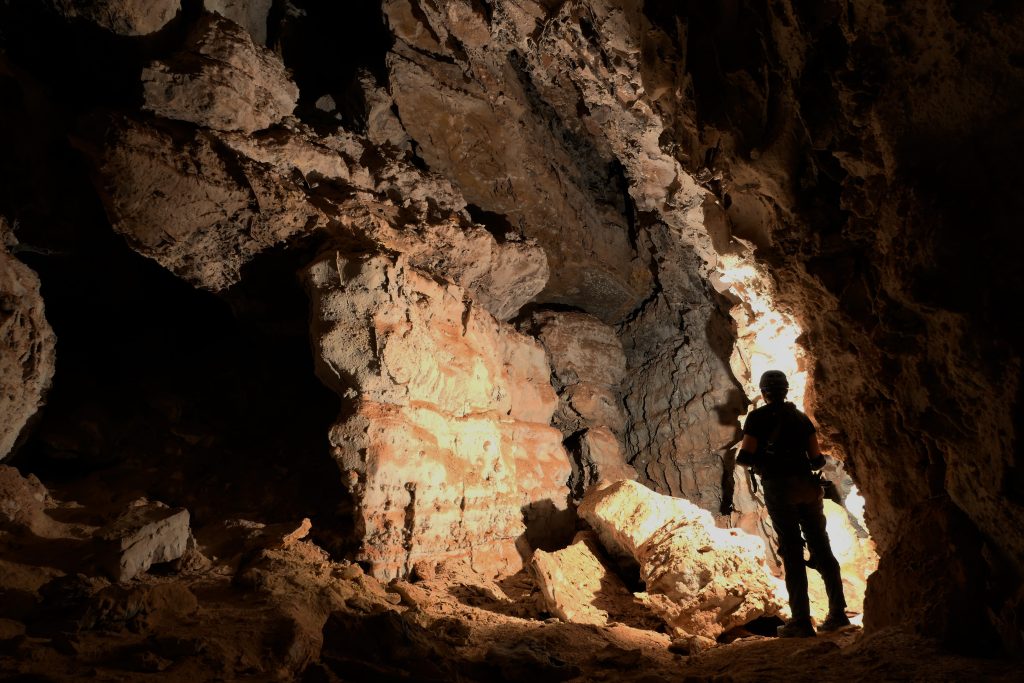Desktop News | November 2023

In the heart of South Dakota, buried deep beneath the surface, lies a hidden world of unimaginable mystery and beauty; Wind Cave stretches out over an astounding 165 miles of passageways, making it the seventh longest cave on the planet. It’s a place where darkness reigns, and life survives in the most unexpected ways. Dr. Hazel Barton, the Loper Endowed professor of geological sciences at The University of Alabama and her team have been attempting to understand how life lives in the dark and isolated environments of the cave.
Barton’s team have been working in a remote area almost four hours from the entrance, where over 500 feet below the surface, the passages of the cave intersect an ancient aquifer. At the point where the cave meets the aquifer, over a mile of water filled passageways are created. On one of their first trips to these lakes, the researchers discovered that these lakes contain some of the cleanest water on Earth, populated by extraordinary bacteria. They have since been attempting to understand how this unique life survives in such isolation, and their work suggests that the answer is manganese. As Barton explained, “Plants use the energy of sunlight to grow, but we think that in complete darkness, the bacteria use manganese as a source of this energy.”

The clue to that idea came from the microbes within the lake, along with ancient biofilms formed throughout the cave that look similar to the black smokers found in the depths of the ocean. Instead of sulfur, these biofilms appear to be using manganese. In this remote underground realm, geological processes play a pivotal role in creating an environment that is both curious and promising. The unique structures of these biofilms make them a potential new target for astrobiology, which aims to understand the origin and possible extent of life elsewhere in our Solar System.
Europa, a moon of Jupiter, has the potential to contain significant manganese in an ocean under its icy exterior. Barton and her team wanted to understand if the life in Wind Cave could tell us about the potential for manganese to support life in places like Europa. But to obtain the necessary data to answer this question required tools and techniques that don’t currently exist. Barton therefore teamed up with an aerospace company with experience working in extreme environments, Stone Aerospace. Together, they obtained a grant from NASA to build a robot that would be capable of studying the unique microbiology of the lakes, “Because there’s so few cells there, it’s very difficult to sample. So, we have to have a device that can be made sterile to protect the unique life there, light enough to carry through the cave and fit through very small spaces, and function under the power constraints of working without solar power. All factors that would be needed on a planetary mission to Europa.”

NASA agreed and awarded the team a three-year, $3 million grant to study the life and explore the possibility of sending a similar mission to distant, enigmatic places like Europa. The project is on the lookout for eager undergraduate students to be a part of this groundbreaking journey. It is an opportunity for those who are passionate about science, exploration and the hidden wonders of the world to join a team that is charting new territories beneath the Earth’s surface.
For more information, visit https://bit.ly/49jLI56.